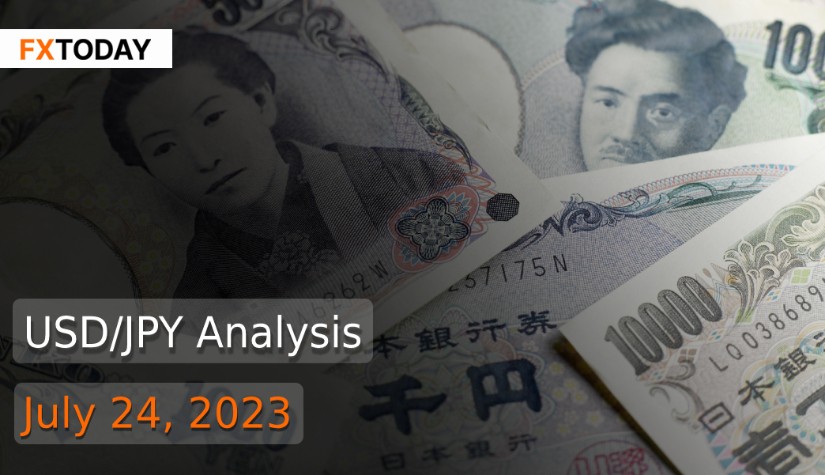BOJ Expected to Maintain YCC Amid Fragile Economy
The Bank of Japan is expected to maintain its yield control policy unchanged in its upcoming meeting, as policymakers want to gather more data to ensure continued growth in wages and inflation. However, there is no consensus within the central bank on when to begin phasing out its stimulus measures.
Some market players speculate that the central bank may adjust its yield curve control (YCC) policy during the meeting to address market distortions caused by its heavy bond buying. However, many BOJ policymakers see no immediate need for further measures as the 10-year yield remains stable below the 0.5% cap.
Despite Japan's core inflation staying above the central bank's 2% target for 15 consecutive months, signs of slowing energy and services price growth indicate that wage pressures may not yet warrant an immediate shift in monetary stance.
The BOJ is likely to revise up its core consumer inflation forecast for the current fiscal year, but forecasts for fiscal years 2024 and 2025 are expected to remain mostly unchanged. Despite inflation exceeding the BOJ's target for over a year, Japan's economic recovery remains fragile due to slowing global demand, affecting export growth.
Recent wage negotiations saw companies offering the highest pay raises in three decades, leading to expectations of a potential tweak to the BOJ's YCC policy. However, BOJ Governor Kazuo Ueda has emphasized that a near-term exit from ultra-loose policy is unlikely, and inflation must be driven by robust domestic demand and higher wage growth.
Highlighting the vulnerability of Japan's economic rebound, the government has reduced its growth projection for the current fiscal year. The economy is now expected to grow by 1.3%, lower than the previously estimated 1.5% in January, primarily due to the impact of declining global demand on exports.
While the Bank of Japan's decision is expected to differ from rate hikes anticipated by the Federal Reserve and the European Central Bank, uncertainty remains as to whether the Fed's meeting will signal the end of its tightening cycle or if further rate hikes are to be expected.
As a result, the JPY is expected to experience volatility in the short term, with a potential for a cautious and measured approach to any changes in monetary policy by the Bank of Japan. Global economic developments and the decisions made by other major central banks, particularly the Federal Reserve and the European Central Bank, will also play a significant role in shaping the JPY's trajectory.
Data for Technical Analysis (5H) CFD USD/JPY
Resistance : 141.72, 141.82, 141.97
Support : 141.40, 141.30, 141.15
5H Outlook
Source: Investing.com
Buy/Long 1 If the support at the price range 141.20 – 141.40 is touched, but the support at 141.40 cannot be broken, the TP may be set around 141.72 and the SL around 141.10, or up to the risk appetite.
Buy/Long 2 If the resistance can be broken at the price range of 141.72 – 141.92, TP may be set around 142.10 and SL around 141.30, or up to the risk appetite.
Sell/Short 1 If the resistance at the price range 141.72 – 141.92 is touched, but the resistance at 141.72 cannot be broken, the TP may be set around 141.31 and the SL around 142.02, or up to the risk appetite.
Sell/Short 2 If the support can be broken at the price range of 141.20 – 141.40, TP may be set around 141.00 and SL around 141.82, or up to the risk appetite.
Pivot Points Jul 24, 2023 02:22AM GMT
| Name | S3 | S2 | S1 | Pivot Points | R1 | R2 | R3 |
|---|---|---|---|---|---|---|---|
| Classic | 140.90 | 141.15 | 141.31 | 141.56 | 141.72 | 141.97 | 142.14 |
| Fibonacci | 141.15 | 141.30 | 141.40 | 141.56 | 141.72 | 141.82 | 141.97 |
| Camarilla | 141.35 | 141.39 | 141.43 | 141.56 | 141.50 | 141.54 | 141.58 |
| Woodie's | 140.84 | 141.12 | 141.25 | 141.53 | 141.66 | 141.94 | 142.08 |
| DeMark's | - | - | 141.23 | 141.52 | 141.64 | - | - |
Sources: Investing 1, Investing 2
Maximize your knowledge: Blog
















